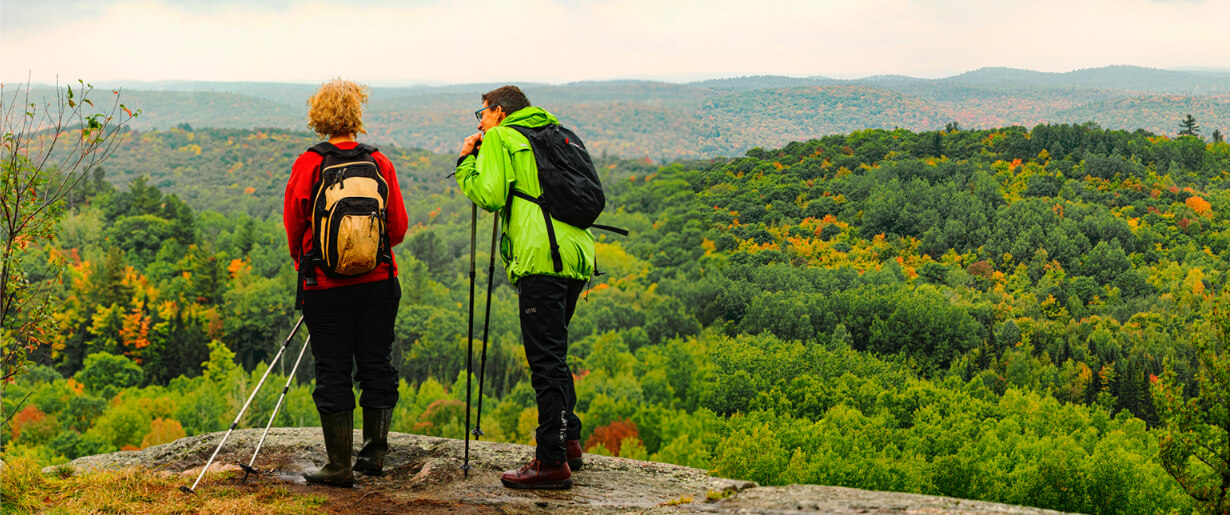Target Weeds

Lanark County has targeted six invasive plants and noxious weeds that cause damage to the environment, the economy, human health, and agriculture:
- Wild parsnip
- Phragmites
- Japanese knotweed
- Dog-strangling vine
- Poison ivy
- Giant hogweed
In Ontario we have the Invasive Species Act and the Weed Control Act that regulate invasive plants and noxious weeds. Noxious weeds usually are a health risk to livestock and people, difficult to manage on agricultural land, and cause damage to crops. The aim of the Weed Control Act is to reduce noxious weeds, diseases spread by noxious weeds, and health hazards for livestock and people. Invasive plants and noxious weeds can be tracked and reported to Ontario’s Early Detection & Distribution Mapping System (EDDMapS).
Wild parsnip
Wild Parsnip is a noxious weed with sap that can cause severe burning and blistering when exposed to the sun. The blisters typically occur after one to two days and can result in long-term scarring. The best way to protect yourself is to know what the plant looks like and how to handle it.
Wild Parsnip was introduced to Canada by early European settlers that escaped cultivation to disturbed areas, especially abandoned farmland. Crops and hay infested with wild parsnip lose their economic value because of the harmful effects for people and animals. Wild parsnip grows in dense stands that prevent other plants from growing for pollinators.
How to control wild parsnip
The best management practices to control wild parsnip depend on the number of plants and the size of the infested area. Always wear protective clothing and eye protection when handling wild parsnip.
- For large areas of wild parsnip, you can hire a contractor to spray with herbicide, or mow the area before the plant has seeds.
- For small infestations, the most effective method is to dig up the taproot.
- For dense patches, you can use a tarp to smother the plants for one growing season.
- For plants that have gone to seed, you can clip the seed heads.
Our wild parsnip brochure provides a summary of control options.
Phragmites
Phragmites, also known as European common reed, is an invasive perennial grass that can take over wetlands, shorelines, and beach fronts. Phragmites can:
- infest shorelines and lower property values;
- prevent water access for recreational activities like swimming, boating, and fishing;
- cause flooding in ditches by preventing water from draining that causes damage to property and crops;
- form dense stands that crowd out all other plants, which causes animals caught in Phragmites cells to die if they cannot escape; and
- increase the risk of fires.
How to control phragmites
Phragmites are difficult to control because of the well-established root system, but the best management practices provides some options for control and how to tell Phragmites from native grasses. Our phragmites brochure provides a summary of control options.
Japanese knotweed
Japanese knotweed is a highly invasive plant from east Asia that forms dense thickets of bamboo-like vegetation. Japanese knotweed can cause significant infrastructure damage. The roots can grow through 8cm thick concrete and asphalt. In wet areas, Japanese knotweed can out compete other plants and wildlife and prevent access to water for recreational activities. In Ontario it is illegal to grow, buy, or sell Japanese knotweed.
How to control japanese knotweed
According to the best management practices for Japanese knotweed controls like digging need to be done carefully because it can be spread by root fragments and digging can make infestations worse. Our japanese knotweed brochure provides a summary of control options.
Dog-strangling vine
Dog-strangling vine is an invasive plant in the milkweed family. In the U.S. it is called pale swallowwort. Dog-strangling vine forms thick mats of vegetation which hinder recreational activities, choke out native species and negatively impact managed woodlots. Monarch butterflies are in decline and may mistaken lay their eggs on dog-strangling vine but cannot survive. In Ontario it is illegal to grow, buy, or sell dog-strangling vine.
How to control dog-strangling vine
The best management practices to control dog-strangling vine depends on the number of plants and the size of the infested area. Control measures try to reduce the spread of the fluffy seeds that can travel long distances with the wind. Our dog-strangling vine brochure provides a summary of control options.
Poison ivy
Poison ivy is a noxious weed that contains a poisonous chemical in all parts of the plant. The sap can cause irritation, blisters, and intense itchiness. Poison ivy is a woody, three-leaved perennial plant that grows low to the ground or in vines on trees. The best way to protect yourself is to know what the plant looks like and how to handle it.
How to control poison ivy
Do not burn poison ivy leaves or stems. The poison can be released into tiny droplets in the smoke that can cause a severe reaction on exposed skin or in the breathing passage if inhaled. Always wear protective clothing when handling poison ivy. Our poison ivy brochure provides a summary of control options and our digging recommendation has more details about how to dig it up.
Giant hogweed
Giant hogweed is a noxious weed with sap that can cause severe burning and blistering when exposed to the sun. The blisters typically occur one to two days and can result in long-term scarring. The best way to protect yourself is to know what the plant looks like and how to handle it.
Giant hogweed damages crop quality and is a health risk for livestock and horses. Dense stands of giant hogweed also compete for space with other plants for pollinators.
How to control giant hogweed
The best management practices to control giant hogweed depends on the number of plants and the size of the infested area. Always wear protective clothing and eye protection when handling giant hogweed. Our giant hogweed brochure provides a summary of control options and a comparison to its look-a-like, cow parsnip
Contact Us
